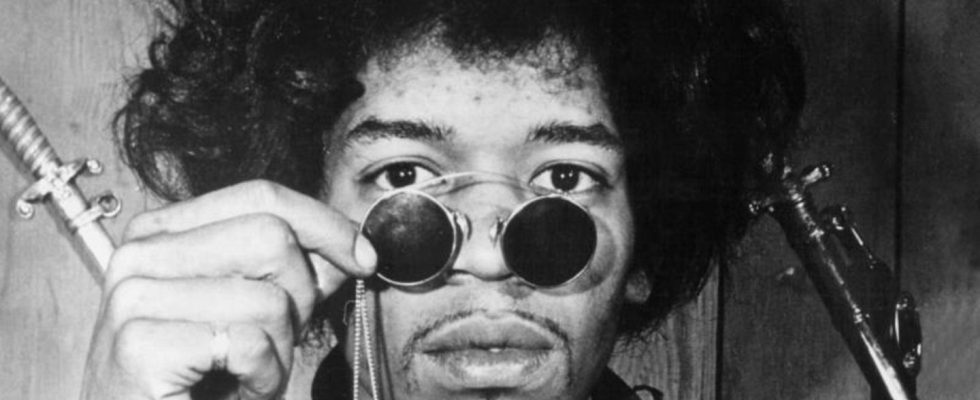Jimi Hendrix and Co.
Young, Famous, Dead: The Eerie “Club 27”
Jimi Hendrix (1942-1970)
© DPA
It’s a bit scary that Amy Winehouse died in 2011 at the age of 27. Because in the music scene, the somewhat tactless and somewhat mysterious buzzword “Club 27” or “Forever 27” has been around for decades. The reason: A striking number of big rock stars died at the age of 27.
Janis Joplin, Jimi Hendrix, Kurt Cobain, Amy Winehouse – many great musicians have died at the age of 27. An overview of the tragic “Club 27”.
brian jones
He is the founder of the so-called “Club 27”: Former Rolling Stones guitarist Brian Jones was found dead in his swimming pool in Hartfield, Sussex, on July 3, 1969. His fellow musicians had already thrown him out of the band. It was Brian Jones who, with his variable guitar playing and his many ideas, made the Stones’ rise to the biggest rock band in the world possible in the first place. But he took the motto “Sex, Drugs & Rock’n’Roll” too literally. Due to his excessive alcohol and drug use, he was often unable to take the stage. Because of this, the Stones have not been able to tour since 1967.
Private complications also put a strain on the relationship: in the spring of ’67, Keith Richards had ripped Jones off of his girlfriend, Anita Pallenberg. On June 8, 1967, Mick Jagger, Keith Richards and Charlie Watts informed him of their decision not to continue with him. He was dead less than four weeks later. The circumstances remain unclear to this day. There are still persistent rumors that the musician was murdered by the building contractor Frank Thorogood.
Jimi Hendrix
Jimi Hendrix’s big break came on June 15, 1967 with a rousing performance at the Monterey Pop Festival, at the end of which he set his guitar on fire. Ironically, Brian Jones announced the performance at the time – so it is not without a certain irony that Hendrix followed him as number 2 in the “Club 27”. Hendrix is still considered the greatest rock guitarist of all time. He expanded the spectrum of popular music with hitherto unheard noises, experimented with studio effects – and above all was a gifted live musician.
But the pressure on Hendrix was immense: while he was revered as the guitar god and celebrated for mediocre concert performances, he had clear artistic vision. More and more often he took refuge in drugs. He was found dead in London on September 18, 1970. He had previously consumed alcohol and sleeping pills and choked on his vomit.
Janis Joplin
Less than three weeks after Jimi Hendrix’s death, “Club 27” recorded its next prominent entry. Like Hendrix, Janis Joplin was also an icon of the hippie movement, which also celebrated its breakthrough in Monterey. Joplin was the celebrated blues singer on stage, but privately she suffered from school hurts and loneliness. She sought solace in alcohol, later hard drugs were added. That was her undoing: On October 4, 1970, she died in a motel in Los Angeles from a heroin overdose. She was recording her fourth – and best – album, Pearl, which was released posthumously and was a smash hit.
Jim Morrison
Hardly anyone embodied the Dionysian in rock music, the ecstatic and excessive derived from the Greek god Dionysus, as decisively as Jim Morrison. As the singer of the Doors, he became a figurehead of the emerging counterculture: drugs, sex, parties – Morrison left nothing out. “I’m interested in everything that has to do with revolt, disorder, chaos,” he once said, and that’s how he lived.
In early 1971, Morrison took some time off and moved to Paris with his girlfriend Pamela Courson. There he was found dead in the bathtub on July 3 of that year. The official coroner’s report lists cardiac arrest as the cause of death, but his partner later attributed the death to a heroin overdose. However, the theory that Morrison only faked his death in order to finally write poetry in peace is not entirely dead. With or without him – his grave is in the Père Lachaise Cemetery in Paris and is still a popular place of pilgrimage for young people from all over the world.
Kurt Cobain
He was an alternative rocker at a time when this music only existed in niches – and became the biggest pop star of his generation almost overnight. His band Nirvana’s LP “Nevermind” provided the blueprint for Generation X and is considered the most influential album of the past quarter century. However, Cobain was not attuned to fame, he took refuge in drugs. On April 5, Cobain shot himself in the head with his shotgun at his home in Seattle. In his farewell letter he quoted Neil Young: “It’s better to burn out than to fade away.”


